Adapting Stephen King's Chattery Teeth: 1997’s Quicksilver Highway Puts A Goofy Spin On Hitchhiking Horror (original) (raw)
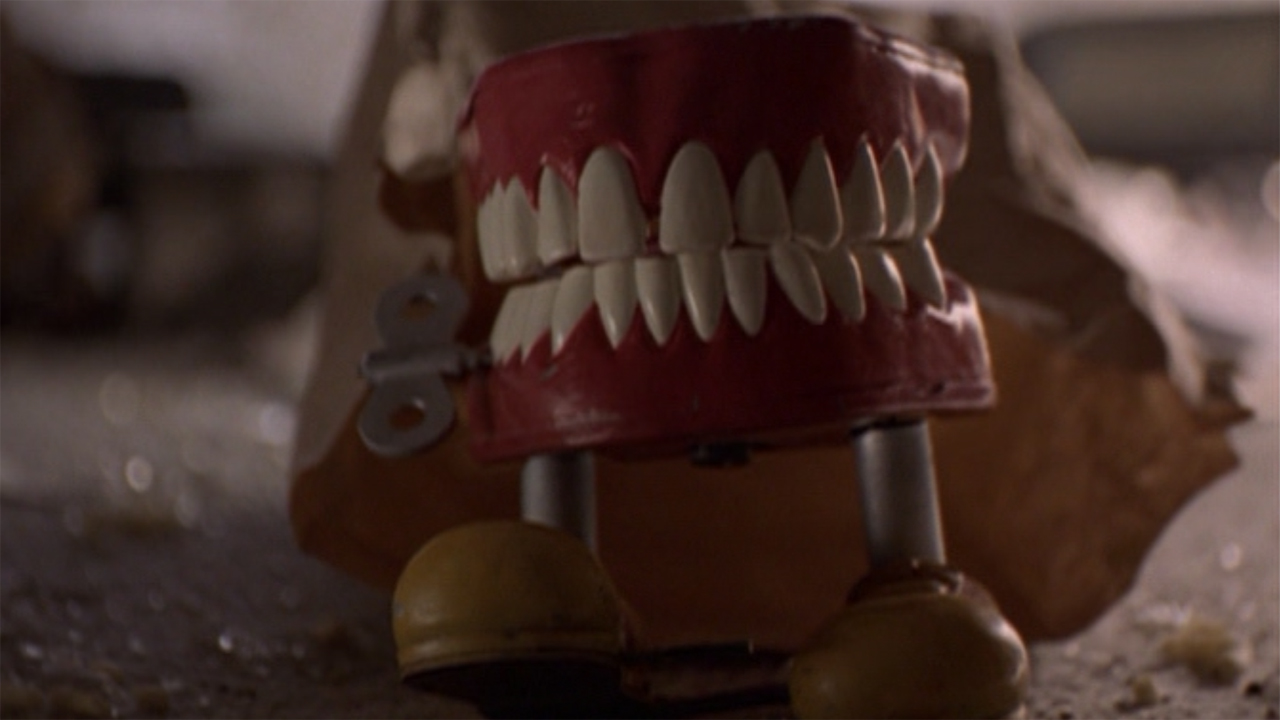
(Image credit: 20th Century Fox)
By 1997, writer/director Mick Garris had done an impressive job establishing himself as one of the preeminent filmmakers in bringing to life the works of Stephen King. The filmmaker had found himself a niche with the author during the era, the two men having collaborated on the original thriller Sleepwalkers, The Stand miniseries, and The Shining remake – and Garris didn’t even wait for the last of those to air before tackling another adaptation. It ultimately became a TV movie called Quicksilver Highway that aired on the Fox network, but the project began life as a potential horror series for ABC.
According to Creepshows by Stephen Jones, Mick Garris was approached by producer Donna Dubrow in early 1997 about developing a horror anthology show that would center on “urban ghost stories” – with Die Hard director John McTiernan (who happened to be Dubrow’s husband at the time) on board to direct the pilot. The idea that Garris came back with was to have each episode of the series take place in a different location around the country, with a set ensemble of actors playing different parts in every one. For the hour-long pilot, he got the rights to adapt the Stephen King’s short story “Chattery Teeth,” which had originally been published in a 1992 issue of the magazine Cemetery Dance before being collected in 1993’s Nightmare & Dreamscapes.
As Mick Garris notes on the filmmaker commentary for Quicksilver Highway, ABC was never really interested in making a horror series, and thus it ended up moving to Fox. At that point it was suggested that making a two hour version of the project could mean it being both a TV movie and a backdoor pilot, and so Garris built out his script with an adaptation of a short story from another horror titan –namely “The Body Politic” by Clive Barker – and further added to the wraparound story featuring Christopher Lloyd as the enigmatic storyteller Aaron Quicksilver.
The lofty goal of turning Quicksilver Highway into something bigger than a TV movie turned out to be a touch too lofty – if not especially because, according to Garris, there was practically zero communication between departments at the studio that would have allowed it to happen. Its fate became to air on Fox during sweeps in May 1997 (just 16 days after the premiere of The Shining miniseries) and get spectacularly crushed in the ratings, placing 80th the week it aired.
Given this strange history, it's little surprise that Quicksilver Highway is a production largely forgotten by pop culture, but it didn’t miss my radar, and is the subject of this week’s Adapting Stephen King.
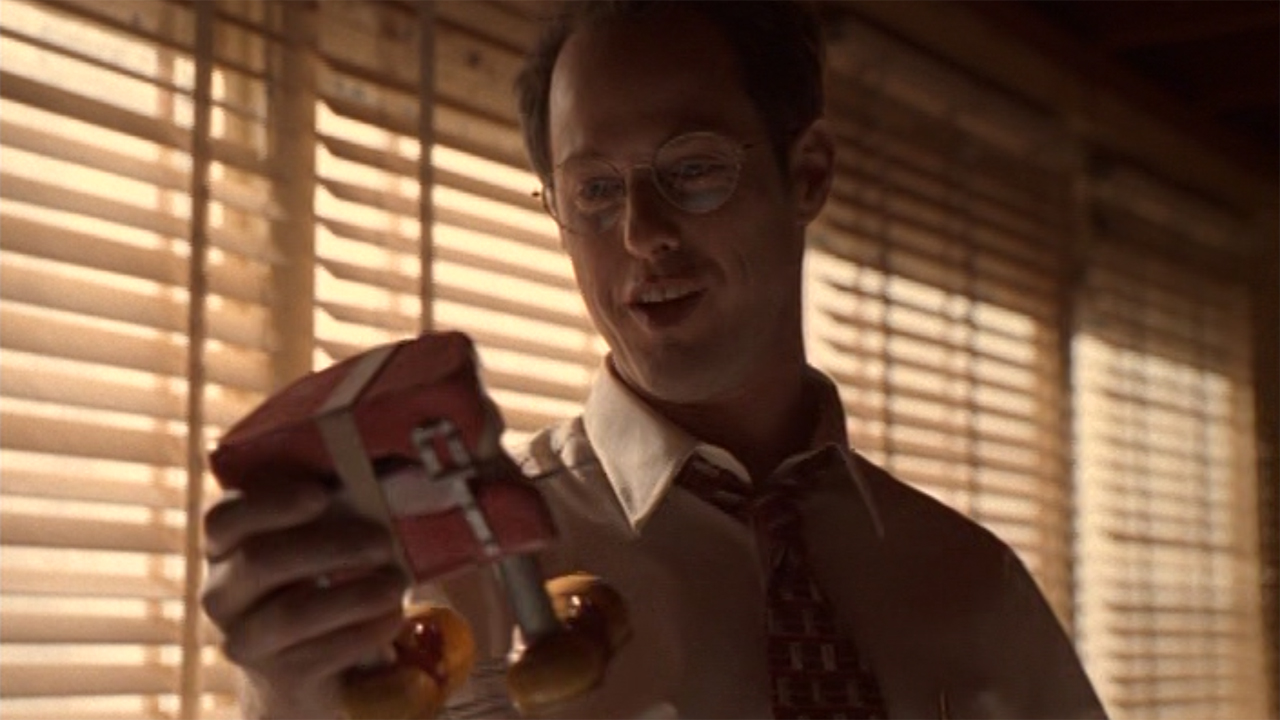
(Image credit: 20th Century Fox)
What “Chattery Teeth” Is About
Digging through my small library of research materials I’ve collected in the writing of this column, I was sadly unable to find anything about the origins of “Chattery Teeth” – and this includes the “Notes” section of Nightmares & Dreamscapes, which chronicles the inspiration behind just a limited number of the collection’s stories. One can imagine Stephen King coming across one of the titular novelty toys and envisioning a circumstance where it would have a mind to really bite somebody, but that’s pure speculation.
What’s much easier to wrap one’s mind around is the idea of the author telling a story involving hitchhiking horror, a genre trope of the 20th century (a time before Uber and Lyft turned taking a ride in a stranger’s car into a normal, everyday thing). The practice became common during the Great Depression, and it’s regularly associated as part of the hippie lifestyle of the 1960s and 1970s – but there is an obvious danger, and pop culture has also done more than its part to highlight the risks in doing it. Robert Harmon’s The Hitcher starring C. Thomas Howell and Rutger Hauer, for example, came out in 1986, and let’s also not forget that King himself developed the story “The Hitch-hiker” as one of the tales of terror featured in Michael Gornick’s Creepshow 2 a year later.
Your Daily Blend of Entertainment News
Of course, “Chattery Teeth” is a much goofier take on hitchhiking horror than most other examples that use the premise.
Salesman Bill Hogan – who is in the business of UPC codes and laser scanners – begins the story casually browsing the shelves of a southwest convenience store run by a bickering elderly couple, on his way home from a business trip. After tossing a quarter to a raggedy young man who is 10 cents short when buying a pack of cigarettes, his eye is caught by a set of oversized chattery teeth that are made of metal and sport a funny pair of orange shoes and white spats.
He inquires about the trinket, thinking that it could be a nifty gift for his son, but is disappointed to learn that the wind-up mechanism inside it was broken when accidentally dropped on the floor. Scooter, the clerk whom Bill learns is dying from cancer, decides to do a nice thing and offers the toy to the protagonist for free, telling the customer that he thinks that his kid will enjoy the toy anyway.
As he exits the shop, Bill once again encounters the raggedy young man, and the stranger asks if he can bum a ride. Bill is hesitant at first, having previously been robbed by a hitchhiker, but he acquiesces because there is a dust storm on the horizon. A few minutes into the ride, the hitchhiker, who identifies himself as “Bryan Adams,” confirms that the salesman was right to be suspicious, as he takes out a knife and initiates a carjacking – but what Bryan doesn’t foresee is that Bill’s present for his son has a mind of its own, and a pretty vicious bite.
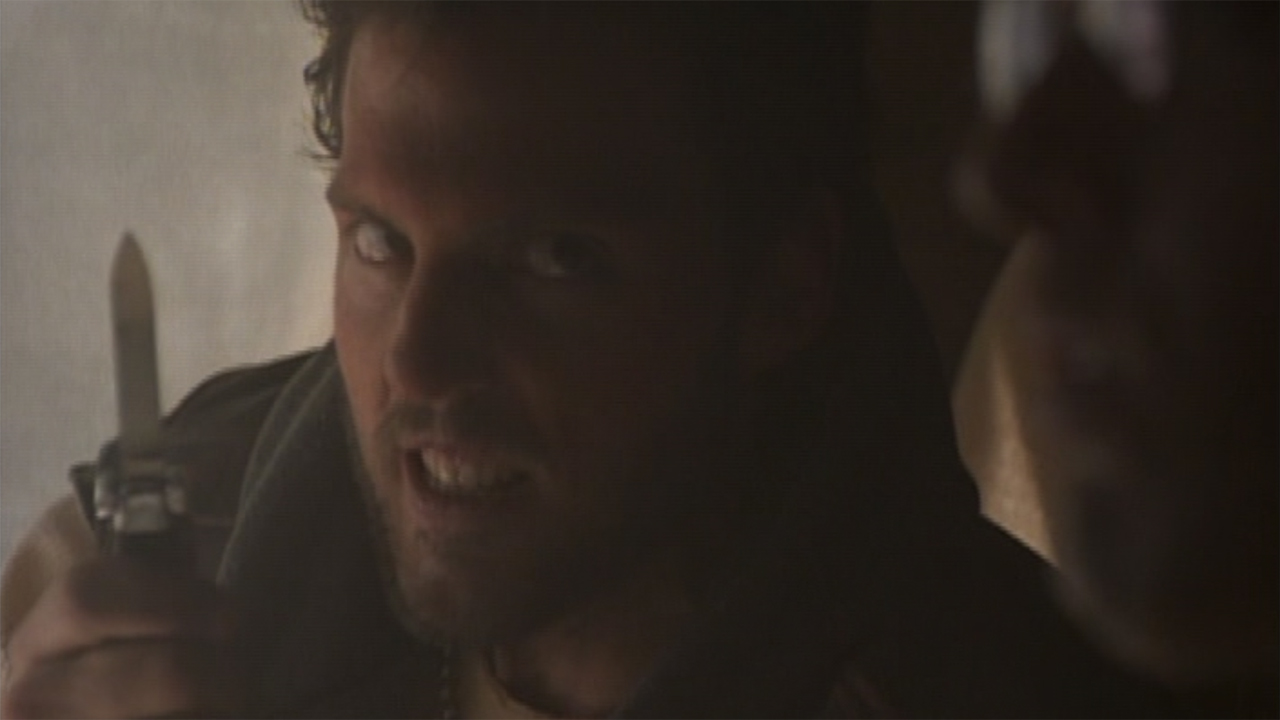
(Image credit: 20th Century Fox)
How Mick Garris’ Quicksilver Highway Differs From “Chattery Teeth”
In the process of writing “Chattery Teeth” for the small screen, director Mick Garris felt no need to make any radical changes to the Stephen King short story. There are even specific lines of dialogue where the teleplay doesn’t change a word – such as when Bill Hogan (Rafael Sbarge) tells Bryan Adams (Silas Weir Mitchell) that his past bad experience with hitchhikers “vaccinated” him against the idea. Budget and story real estate, the two biggest motivators behind alterations in the adaptation process, didn’t really force any big changes… though there are some noticeable differences between the source material and what’s featured in Quicksilver Highway.
To start at the start, Mick Garris provides “Chattery Teeth” with a brand new opening. Rather than starting with Bill in the convenience store, the TV movie opts to add a kind of prologue that adds a bit more drama to the whole circumstance. It starts with Bill being in a fight with his wife on the phone because he isn’t going to be home in time to celebrate his son’s birthday (adding pressure to the protagonist’s circumstances), and then he nearly hits Bryan Adams when he’s driving and briefly looks away from the road (giving the villain some extra motivation to try and steal Bill’s van beyond simple greed/desperation).
With those additions also come a couple cuts, specifically a pair of flashbacks that are reduced to lines of dialogue in the script. One is Bill’s first time being mugged by a hitchhiker, who is remembered by the salesman as being a young woman who stole his wallet and then slapped him across the face when he asked if he could at least keep his driver’s license. The second is the “bad experience” that Bill relates to Bryan Adams regarding why he opts to drive instead of fly – specifically that he was on a 1982 commuter flight that crashed in Reno and saw six of 19 passengers killed. Mick Garris clearly didn’t feel the need to break away from the action of the main story just to include these sequences.
The only other major change in the adaptation of “Chattery Teeth” has to do with content, as the Stephen King short story contains a level of gore that was never going to fly on 1990s network television. For example, when the eponymous toy first comes to life and chews on Bryan Adams’ nose, it doesn’t simply give it a brief nibble and let go – it bites it clean off. After that, it goes straight for the young criminal’s crotch and goes to violent work. Mick Garris’ version placates to the censors and doesn’t feature any blood at all, though there is a great shot that sees the hitchhiker lift up his right hand and scream when he notices that three of his fingers have been sliced off at the second knuckle.
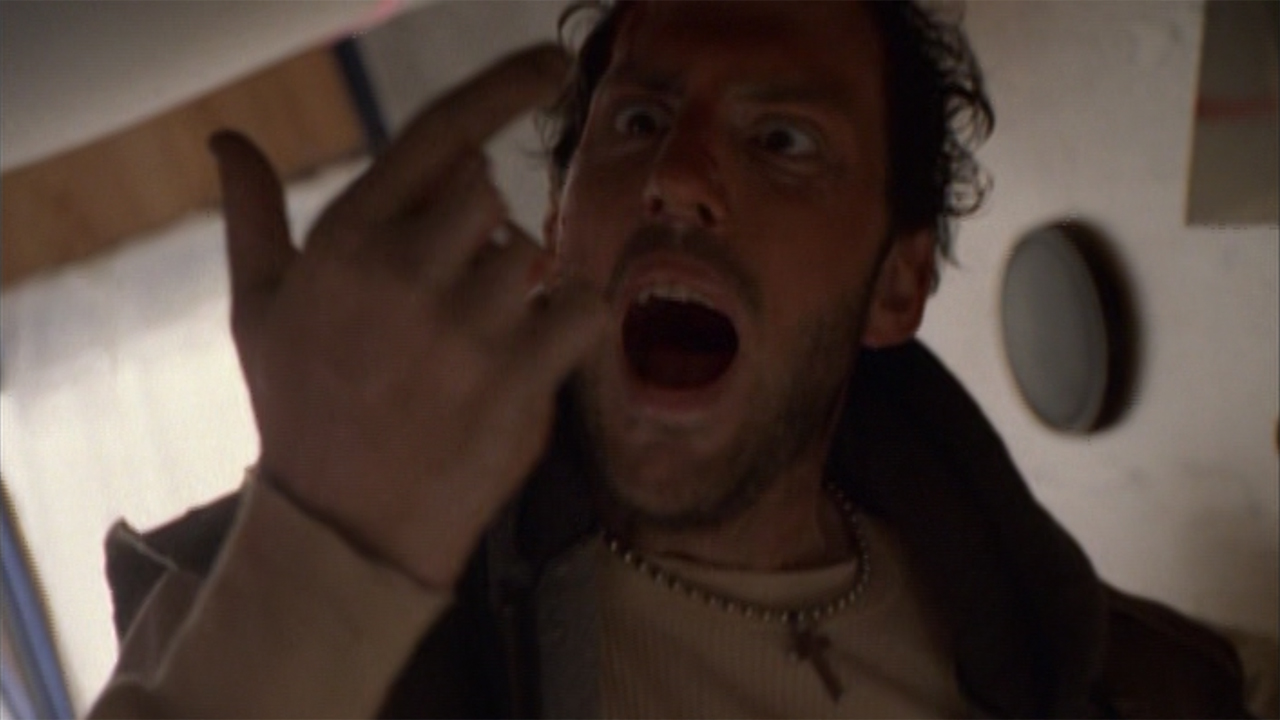
(Image credit: 20th Century Fox)
Is It Worthy Of The King?
Mick Garris’ Quicksilver Highway exists in a strange nebulous zone in the history of Stephen King adaptations. Its origins alone as a pilot-turned-TV movie make it an oddity, and it’s strange that it was released essentially in the shadow of the Shining miniseries… which itself was in the shadow of the 1980 Stanley Kubrick film. It can’t legitimately be called one of the most underrated titles in the extensive catalogue, nor one of the best or one of the worst. Its legacy is as a silly slice of entertainment that appreciably hones close to the source material.
Stephen King is a creative who recognizes the close relationship between horror and comedy – both being genres that aim to elicit specific reactions from audiences (screams and laughs, respectively), and “Chattery Teeth” is very much a story where King leans in. And while Mick Garris’ track record with funny isn’t nearly as prolific as the author’s, he demonstrates a similar understanding in the making of Quicksilver Highway (though I’ll forever be baffled by the hair, makeup, and costume choices for Christopher Lloyd’s Aaron Quicksilver, which aren’t funny or scary; they’re just… odd).
Rafael Sbarge’s turn as Bill Hogan isn’t particularly great, as he makes the character far more unpleasant than how he comes across in the short story, but the climax allows every shortcoming in the adaptation to be forgiven. The filmmaking tricks employed to bring the chattery teeth to life are delightful (the moments rolled in reverse create a great effect), and while adding buckets of gore probably would have made the laughs even bigger, it’s hard to blame the adaptation in that department given the content censorship it had to deal with.
For a TV movie that was shot and released in less than four months, Quicksilver Highway is arguably an impressive achievement for what it is, and perhaps the highest compliment I can give it is that had it ended up being a backdoor pilot for a new kind of horror anthology series, it’s a show that I would have watched.
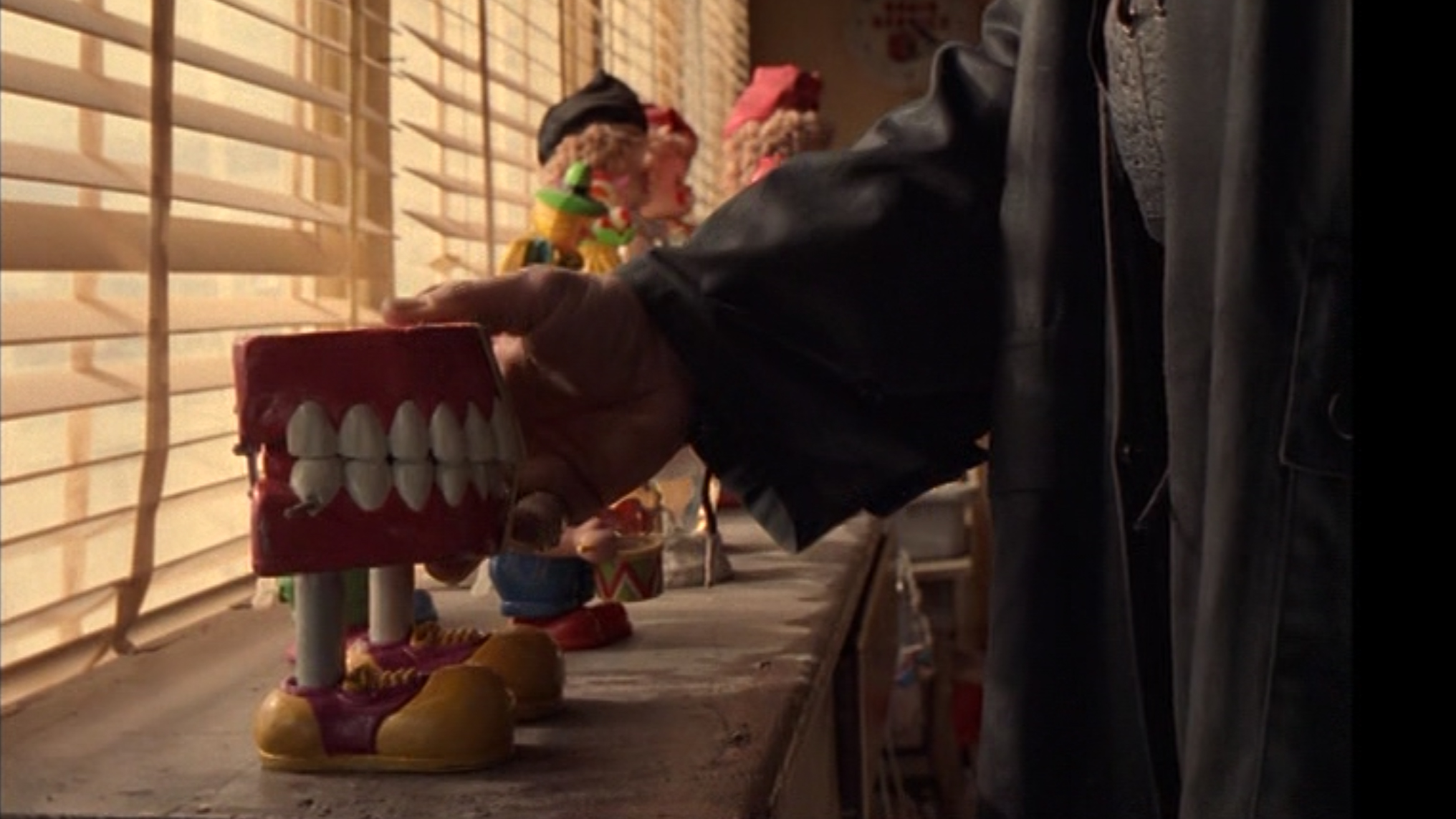
(Image credit: 20th Century Fox)
How To Watch Mick Garris’ Quicksilver Highway
Mick Garris’ Quicksilver Highway is unquestionably one of the lesser-seen Stephen King adaptations – which is a history that started with low broadcast ratings, and continues thanks to exceptionally limited presence on the home video market in the digital age. At the time of this feature’s publication, an HD version of the TV movie does not exist, and by extension it is neither available to stream on any subscription service, nor available for rental or purchase at any online retailers. The only way to watch the small screen feature is to pick up a copy of it on DVD, specifically the disc put out by Anchor Bay Entertainment back in 2005. The positive news is that it is easy to find, and that the release includes a fun commentary track recorded by the writer/director and actress Cynthia Garris (who is also his wife).
Next Wednesday the tour through the various Stephen King adaptations of 1997 will continue, as my attention will be focused on the 1990s reboot of The Outer Limits – specifically the episode directed by Steven Weber (the directorial debut of The Shining miniseries star) based on the short story “The Revelations of 'Becka Paulson.” Look for the column on Wednesday here in the CinemaBlend TV section, and until then you can discover previous installments by clicking through the banners below.

 (Image credit: Warner Bros.)
(Image credit: Warner Bros.) (Image credit: MGM/UA)
(Image credit: MGM/UA) (Image credit: Laurel Entertainment)
(Image credit: Laurel Entertainment) (Image credit: CBS)
(Image credit: CBS) (Image credit: ABC)
(Image credit: ABC)
Eric Eisenberg is the Assistant Managing Editor at CinemaBlend. After graduating Boston University and earning a bachelor’s degree in journalism, he took a part-time job as a staff writer for CinemaBlend, and after six months was offered the opportunity to move to Los Angeles and take on a newly created West Coast Editor position. Over a decade later, he's continuing to advance his interests and expertise. In addition to conducting filmmaker interviews and contributing to the news and feature content of the site, Eric also oversees the Movie Reviews section, writes the the weekend box office report (published Sundays), and is the site's resident Stephen King expert. He has two King-related columns.